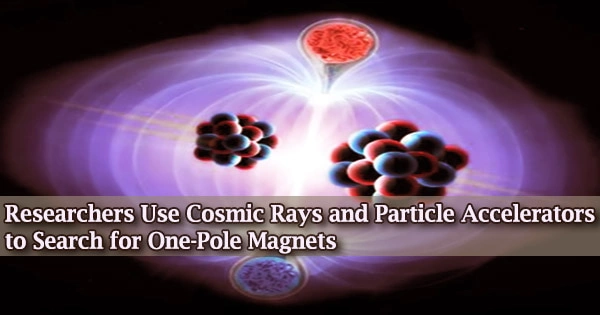According to a recent study published in Physical Review Letters, the presence of long-theorized magnetic monopoles resulting from collisions of violent cosmic rays bombarding the Earth’s atmosphere has been given new leading bounds thanks to some of the world’s most potent particle accelerators.
Everyone is aware with magnets, which have a wide range of uses in daily life, from TVs and computers to children’s toys. Any magnet, including a navigation compass needle with north and south poles, can be broken in half and left with merely two smaller two-pole magnets.
Since physicist Paul Dirac postulated the possibility of one-pole “magnetic monopoles” particles similar to electrons but with a magnetic charge in 1931, this riddle has baffled scientists for many years.
Volodymyr Takhistov, a fellow at the University of Tokyo’s Kavli Institute for the Physics and Mathematics of the Universe (Kavli IPMU), led an international team of researchers who conducted the most sensitive searches for magnetic monopoles to date over a wide range of potential masses to investigate whether magnetic monopoles exist.
The researchers concentrated on an uncommon source of cosmic rays that collide with monopoles in the atmosphere and have been happening for eons. It was necessary for interdisciplinary research to bring together specialists in accelerator physics, neutrino interactions, and cosmic rays.
Science has already benefited greatly from cosmic ray collisions with the atmosphere, particularly in the study of spectral neutrinos. Takaaki Kajita received the 2015 Nobel Prize in Physics as a result of the Super-Kamiokande experiment’s discovery that neutrinos oscillate while in flight, suggesting that they have mass.
The team began working on monopoles after being somewhat motivated by the outcomes of Super-Kamiokande. Light monopoles with masses close to the electroweak scale, which are easily accessible by traditional particle accelerators, were of particular interest.
The researchers created models of cosmic ray collisions that were similar to particle collisions at the LHC at CERN. As a result, they were able to produce a steady beam of light monopoles that fell upon various terrestrial experiments.
This particular source of monopoles is particularly intriguing because it spans a wide range of energies and is unrelated to any previously existing monopoles, such as those that may have been left over as remnants from the early Universe.
The researchers discovered unexpected limitations on monopoles spanning a wide range of masses, including those outside the scope of traditional collider monopole searches, by re-analyzing data from a wide variety of prior experimental monopole searches.
These findings and the origin of the monopoles the researchers analyzed will provide as a helpful reference point for interpreting further monopole searches at terrestrial facilities.





